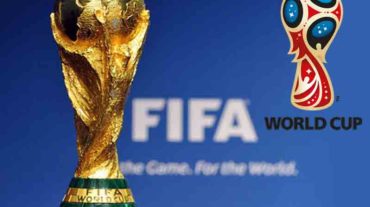
The venue for the British Grand Prix is in the province of Northamptonshire near the town of Silverstone, 130 km northwest of London. The entire establishment was mainly built for aircraft bases in the time of the Second World War. The first circuit was organized in 1948. Since then they have modified the track several times, especially in the last 12 years to increase the safety of the drivers and to create more overtaking points.
The track is 5.1 km long with 17 curves in total (10 on the right and 7 on the left). The circuit combines the slow and fast corners very well with the higher speed straight stages.
The Silverstone Circuit is a racetrack located in Silverstone, England, United Kingdom, about 20 km south of Northampton and 25 km west of Milton Keynes. Part of the racetrack is in Northamptonshire and the remainder in Buckinghamshire.
It is one of the most prestigious circuits in Europe, having hosted the Grand Prix of Great Britain of Formula 1, the 1000 km of Silverstone of the World Endurance Championship, and the Grand Prix of Great Britain of Motorcycling of the World Motorcycling Championship, among other international tests.
The site was an inactive airfield after World War II, and the runways began to be used for races in 1947. The three take-off runways, drawn in the classic triangular format of the time, can still be seen within the circuit.
The British Grand Prix was held at Silverstone from 1948 to 1954. It then rotated between the Silverstone, Aintree and Brands Hatch circuits between 1955 and 1986. The event has been held permanently at Silverstone since 1987. The 1950 edition was the first Scored Grand Prize for the Formula 1 championship in history.
On September 30, 2004, the president of the British Racing Drivers Club, Jackie Stewart, announced that the race would not be included in the provisional calendar of the 2005 Formula 1 season, and even if it were finally raced, it would not take place at Silverstone. . However, on December 9 of the same year an agreement was reached with Bernie Ecclestone, the owner of Formula 1, according to which the Grand Prix would continue to be held at Silverstone until 2009, where the British Grand Prix would be held at Donington Park. This change did not materialize, and Formula 1 continues to visit Silverstone.
The Great Britain Motorcycling Grand Prix of the World Motorcycling Championship was raced there between 1977 and 1986, and then from 2010. The 1000 km of Silverstone is a traditional race of sport prototypes, which belonged to the World Endurance Championship in the the 1970s and 1980s, the Le Mans Series in the 2000s, and the World Endurance Championship again from 2010. The “BRDC International Trophy” was a non-scoring date for Formula 1 from 1949 to 1978, and it was later used to designate the Silverstone race of Formula 2 and Formula 3000.
As one of the main circuits in the country, Silverstone has hosted international championships such as the World Touring Car Championship, the World Endurance Motorcycle Championship, the World Superbike Championship, the GP2 Series, the FIA GT Championship and the World Series. by Renault. In addition, it is the regular venue for the British Formula 3 championships, touring cars, grand touring cars and superbikes, among others.
The original Silverstone layout used the runways of the old airfield. Starting in 1949, Formula 1 began to use a perimeter layout, with eight high-speed corners. In 1975 a chicane was added at the Woodcote corner for Formula 1, which was skipped in other races.
The route was modified again in 1987, when the Woodcote curve was widened and a chicane was added after the bridge. This version was short-lived, as the airfield was completely remodeled by 1991. The Becketts area was converted into S's, a chicane was added at Club, and before Woodcote a mixed sector was created with several low-speed curves, of So the circuit became medium speed. In 1995 Abbey became a chicana, and in 2000 the Luffield curve went from double to single. During the 2000s, the Formula 1 circuit was 5,141 meters in length, and there were two shorter variants, the International of 3,619, and the National of 2,638 meters.
Pit building opened in 2011.
In 2010, the circuit was remodeled to host the World Speed Motorcycle Championship again.1 This new route consists of a new interior section called Arena: Abbey is taken to the right, and the straights of the old International and National routes connect with the Arrowhead curve. Modifications were also made to the Club and Chapel curves, bringing the length to 5,901 meters. In addition, the loopholes were adapted to meet MotoGP safety requirements, the grandstands were brought closer to the track, and the Bridge and Priory corners of the old main track were demolished. The new route was inaugurated on April 29, 2010.2
Later a new pit building was erected on the straight between Club and Abbey. This remodeling has led to criticism, such as that the history of this circuit is being lost.




